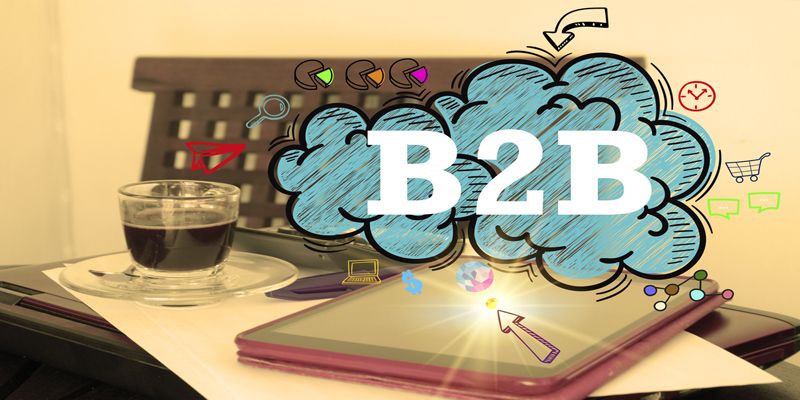
The global business-to-business (B2B) ecommerce market is experiencing rapid growth, driven by transformative trends that are reshaping the industry landscape. With a projected Compound Annual Growth Rate (CAGR) of 20.2% from 2023 to 2030, the market’s value is set to soar.
In this article, we will explore four of the most significant trends that are propelling this growth and their long-lasting impact on the B2B ecommerce industry.
Move to marketplaces
Marketplaces have emerged as a dominant force in the B2B ecommerce ecosystem, offering industrial customers a one-stop solution for their procurement needs. These platforms provide a comprehensive assortment of products, attractive pricing, multiple delivery options, and seamless payment and credit mechanisms. Unsurprisingly, marketplaces are gaining ground over smaller distributors and traders due to their compelling value proposition.
Marketplaces also facilitate integrated compliances, invoicing, and a transparent supply chain, providing larger customers with a streamlined purchase process. This shift to marketplaces is reshaping the distribution landscape, streamlining operations, and improving overall customer satisfaction.
Access to flexible credit
In addition to convenience, industrial customers are seeking flexibility in payment and credit terms that align with their specific business requirements. The ability to access various credit options, such as EMI, monthly payments, working capital credit, and Buy Now Pay Later (BNPL) solutions, has become a crucial factor in the decision-making process.
To cater to this demand, several players have joined the B2B bandwagon, including fintechs, invoice discounting platforms, banks, and other financial institutions, that offer integrated credit offerings in partnership with B2B ecommerce marketplaces.
Such initiatives are bridging the gap between traditional procurement processes and digital-first buying experiences, resulting in higher customer loyalty and increased sales.
Transitioning to “digital first”
The COVID-19 pandemic has left a lasting impact on buying behaviours, accelerating the transition to digital-first B2B ecommerce channels. The shift to online platforms has become permanent for many industrial customers who have discovered the ease and cohesiveness of buying from B2B ecommerce platforms. As a result, customer expectations have evolved, with demands for seamless digital experiences and a preference for transacting through B2B ecommerce channels rather than traditional modes.
Furthermore, suppliers are also embracing the trend, recognizing the benefits of selling through digital platforms. An increasing percentage of sales now originate from “digital first” channels rather than traditional distributor networks. This shift in behavior continues to fuel the rapid growth and increasing CAGRs of the B2B ecommerce industry.

.thumbnailWrapper
width:6.62rem !important;
.alsoReadTitleImage
min-width: 81px !important;
min-height: 81px !important;
.alsoReadMainTitleText
font-size: 14px !important;
line-height: 20px !important;
.alsoReadHeadText
font-size: 24px !important;
line-height: 20px !important;

Generative AI’s transformative power
Artificial Intelligence (AI) is making significant strides across industries, and the B2B ecommerce sector is no exception. Generative AI, in particular, is revolutionising the customer experience and supply chain management in this space. From personalised product recommendations and dynamic pricing to improved inventory forecasting and automated customer support, generative AI is permeating all aspects of B2B commerce.
Large B2B marketplaces, given their scale and digital-first DNA, are better positioned to leverage generative AI effectively, enabling them to adapt faster than smaller, traditional distributors. This technological advantage contributes to the increasing market share of B2B ecommerce companies.
The future of business-to-business ecommerce is undeniably promising. These trends are not only driving substantial growth but also reshaping the way industrial customers procure products and services, and how suppliers cater to their needs.
As the B2B ecommerce landscape continues to evolve, businesses must stay agile, embrace digital transformation, and leverage emerging technologies to remain competitive and meet the ever-changing demands of industrial buyers.
(Swati Gupta is Co-founder of Industrybuying, an online platform that is a gateway for small and medium-sized enterprises.)


![Read more about the article [Weekly funding roundup May 11-17] VC inflow touches new high](https://blog.digitalsevaa.com/wp-content/uploads/2024/04/funding-roundup-LEAD-1667575602969-300x150.png)



![Read more about the article [Funding Roundup] edustoke, NewsReach, CarzSo.com raise early-stage funding](https://blog.digitalsevaa.com/wp-content/uploads/2022/01/VCfunding-1605087354569-300x150.jpg)


![Read more about the article [Weekly funding July 8-14] VC investments touch another low](https://blog.digitalsevaa.com/wp-content/uploads/2023/07/funding-lead-image-1669386008401-300x150.jpg)
![Read more about the article [Funding alert] Edtech startup Teachmint raises $20M in Pre-Series B led by Learn Capital](https://blog.digitalsevaa.com/wp-content/uploads/2021/07/Image8115-1625728574510-300x150.jpg)